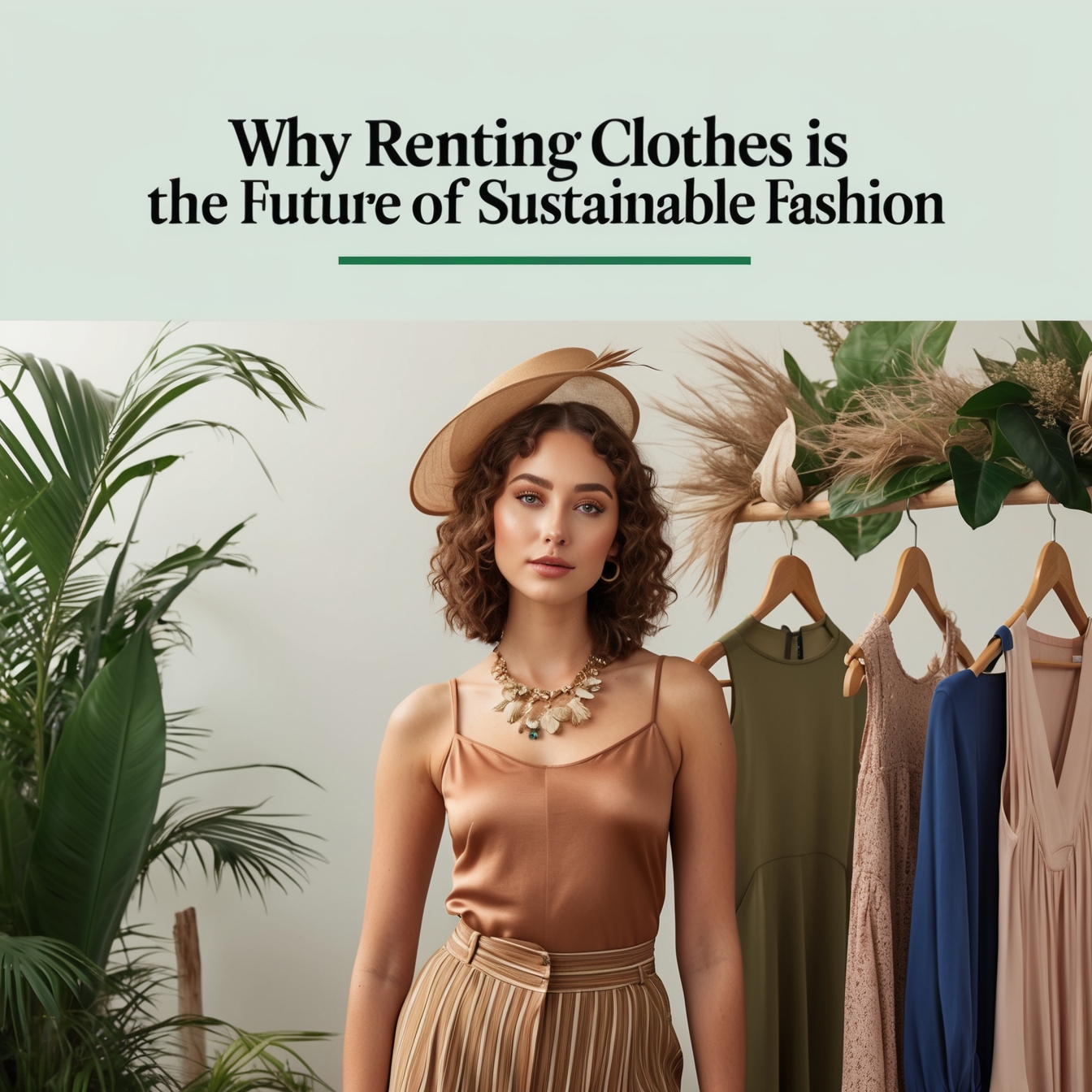As sustainability becomes a growing concern in the fashion industry, renting clothes has emerged as a popular and eco-friendly alternative to traditional shopping. With increasing awareness about the environmental impact of fast fashion, many consumers are embracing clothing rental services as a way to reduce waste, extend the lifespan of garments, and enjoy fashion without the commitment of ownership. Let’s explore why renting clothes is being hailed as the future of sustainable fashion.
1. Reducing Fashion Waste
One of the biggest environmental challenges facing the fashion industry is waste. The fast fashion model encourages consumers to buy inexpensive, trendy pieces, wear them a few times, and then discard them. The environmental impact of fast fashion is significant, contributing to waste, pollution, and resource depletion. Renting clothes offers a solution to this problem by reducing the number of new garments that need to be produced. With rental services, clothing can be worn by multiple people, extending its lifecycle and keeping it out of landfills.
2. Lowering Carbon Footprint
The production of new clothing, especially synthetic fabrics, has a significant carbon footprint. Renting clothes allows consumers to enjoy fashion without contributing to the demand for new items made from resource-heavy materials. Incorporating eco-friendly fabrics into rental collections further reduces environmental harm, offering a sustainable choice in fashion. By reusing garments through a rental system, the overall carbon emissions associated with the fashion industry can be greatly reduced. Renting offers a more sustainable option for consumers who want to stay fashionable while being mindful of their environmental impact.
3. Embracing Circular Fashion
Renting clothes aligns with the principles of the circular economy, which aims to minimize waste and make the most of resources by reusing, repairing, and recycling products. In the context of fashion, renting clothes allows garments to circulate among multiple users, reducing the need for new production. This shift away from a linear “buy, wear, and discard” model helps create a more sustainable fashion industry.
4. Access to High-Quality, Designer Items
Renting clothes offers an affordable way for consumers to access high-quality, designer items that might otherwise be out of reach. Instead of buying fast fashion, which often wears out quickly, renting allows people to enjoy well-made garments for special occasions or everyday wear without the hefty price tag. This encourages a shift toward valuing quality over quantity, another key aspect of sustainable fashion.
5. Versatility Without Commitment
One of the key advantages of renting clothes is the ability to switch up your wardrobe regularly without committing to purchasing new pieces. With fashion trends changing rapidly, renting allows consumers to stay stylish without constantly buying new items. Whether it’s a special event or just a desire for a fresh look, renting offers a versatile solution that minimizes environmental impact.
6. Changing Consumer Mindsets
The rise of clothing rental services reflects a broader change in how consumers view fashion. Over time, the evolution of women’s fashion has seen shifts from ownership-based to access-based models, signaling a growing desire for versatility and sustainability. Renting allows consumers to enjoy the benefits of fashion—variety, style, and self-expression—while supporting a more sustainable and eco-friendly approach.
7. Reducing the Need for Fast Fashion
By providing consumers with an alternative to buying new clothes, rental services help reduce the demand for fast fashion. As more people turn to renting as a solution for their wardrobe needs, the pressure on brands to constantly produce new, low-cost garments will decrease. This shift could lead to a more sustainable fashion industry where quality and longevity take precedence over speed and disposability.
8. Supporting the Sharing Economy
Renting clothes is part of the broader sharing economy, where resources are shared and utilized more efficiently. This model of consumption is already popular in sectors like transportation and housing (e.g., car rentals and Airbnb). In the fashion world, clothing rental services help reduce the environmental impact of individual ownership by promoting shared use, encouraging a more sustainable lifestyle.
Conclusion
Renting clothes is an innovative and practical solution to some of the most pressing issues facing the fashion industry today. By reducing waste, lowering the carbon footprint, and supporting a circular fashion economy, renting is poised to play a crucial role in the future of sustainable fashion. As more consumers adopt this approach, the fashion industry will be better equipped to balance style and sustainability.
